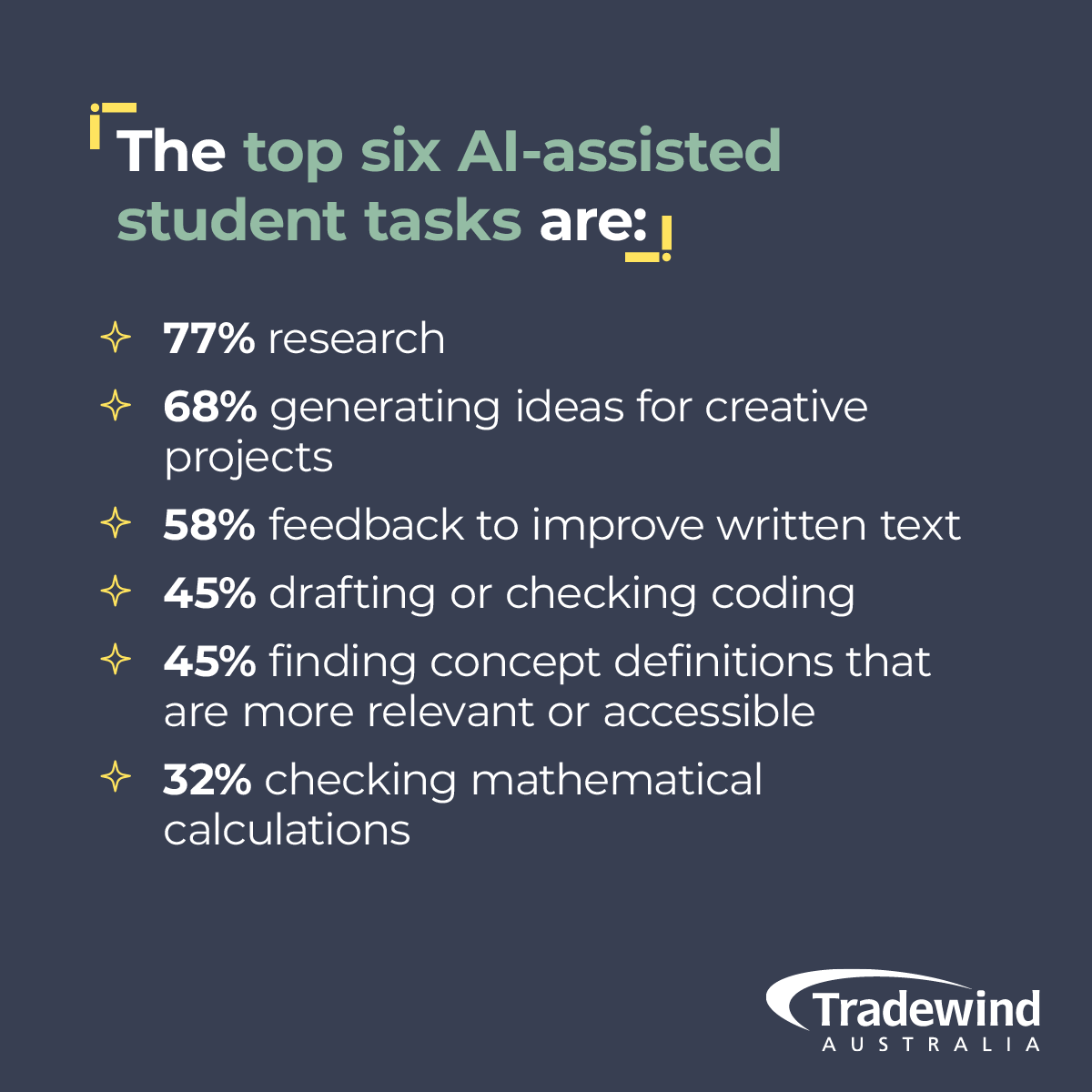While AI has been around for many years in the education space, the rate of advancement has been phenomenal over the past year. It marked a significant milestone in education, with generative AI technologies, such as ChatGPT, formally integrated into primary and secondary schools in Australia.
AI's mainstream debut is a pivotal moment for education, which begs these questions: How is it being used? Has it been good or bad for students and teachers? What are the broader implications of its use? Most importantly, will it change the face of Victoria teacher jobs and Australian education?
As education recruitment specialists with a strong focus on supporting teachers through a changing sector, we’re deeply interested in exploring these questions. Read on for insights into the state of AI in Australian education.
What Is Generative AI?
Generative AI refers to the use of artificial intelligence technologies that automatically generate new content, usually based on the inputs or ‘prompts’ of a human. The AI is trained to learn patterns and structures from existing data to then produce new content that's consistent with the learned data.
In an education setting, AI falls into the EdTech category, the field that combines educational practices with technological tools and solutions that support learning and teaching. Examples of the many different types of EdTech using AI include Mathspace, Literatu, Scribo and Canva.
While not traditionally in the EdTech space, ChatGPT is the generative AI platform that has gotten the most attention from schools, both positive and negative. It’s a language model designed for conversational interactions, answering questions, assisting with information, as well as enabling users to practice a range of skills, such as English and Maths.
A recent AHISA member survey asked teachers what generative AI tools they most commonly use for admin and teaching prep. ChatGPT received 55% of total product mentions, with the next most common Microsoft Bing Chat and Google Bard (both 6%), followed by Grammarly (4%).
How AI Is Being Used in The Classroom
The AHISA member survey provided several interesting insights into the exact ways teachers and students are using generative AI in the classroom. While the survey cohort was relatively small (130 responses), it still represents almost 30% of the AHISA member base. It’s fair to extrapolate that these findings are somewhat similar across government primary and secondary schools.
Here’s how many teachers are using generative AI in their work:
Primary teachers – on average 24%, in some instances up to 72%
Middle and secondary teachers – on average 34.5% and 39% respectively, and in some instances up to 80%
See below the top 10 AI-assisted teacher tasks.

The number one spot on this list is no surprise when you consider an astronomical 92% of teachers in a recent Grattan study reported they don’t have enough time to prepare effectively for classroom teaching. Just over 85% specifically said they don’t have enough time for high-quality lesson planning. Now, let's explore the student use of generative AI.

When teachers were asked about the use of generative AI within the classroom, almost 40% said they’re used in certain classes for select year levels and subjects. Just over one out of five (23%) said students aren’t allowed to access any of these tools when at school. However, some commented this was a temporary measure while their school works on appropriate user guidelines.
Just over 20% selected ‘other’ as a response to this question. When asked to specify, most responses showed schools are treading carefully in introducing generative AI tools within the classroom. They want to take a variety of factors into account including student, parent and staff needs and readiness.
AI In the Classroom – The Benefits
A resounding 91% of teachers said the top benefit of using generative AI tools was time saved, giving them increased opportunity to use their expertise to give feedback to individual students instead.
This was followed by 78% who said it helped to create a draft to get started, 70% to support new idea development, and 55% that it provided new perspectives.
When it comes to the tangible benefits of using AI in student work, the teachers in the AHISA report noted an improvement in drafting, creative inputs, overall calibre of work and engagement. Students also seem to have a greater understanding of concepts, while there were also gains for students with literacy difficulties.
However, only 84 of the 130 respondents in the survey answered this question. Just under half saw positive gains (43%), with another 45% commenting it was too early to judge, or that they didn’t have a way to measure it.
On the negative side, 12% saw no improvements, with those who gave specific responses most commonly mentioning issues with plagiarism.
AI – The Challenges
The report also examined the challenges associated with generative AI use. For teachers:
76% felt deeply or strongly concerned about building capacity in the teacher workforce to harness the potential of generative AI
50% said their top challenge is a lack of time to test the various applications with students
41% believed it’s too time-consuming to learn how to use the tools
31% said the biggest obstacle was a lack of school guidelines around usage
On the topic of generative AI use guidelines:
40% of schools have covered the use of generative AI tools within existing policies
45% are in the process of developing a policy for staff
46% are in the process of developing a policy for students
There are, of course, a number of additional important challenges of using generative AI in the classroom. The first relates to equitable access — AI tools come with a price that will prohibit some schools from using them, creating a disparity of access between those that are well-funded and underfunded.
Similarly, not all schools have the necessary tech infrastructure to support the latest AI tools, especially those in rural areas (the same concerns were raised about equitable access to plagiarism checking software which may become increasingly important). Almost 70% of teachers in the AHISA report said they were deeply or strongly concerned about the digital divide and equity gaps widening.
Another equity point is made in the Australia Human Rights Commission report. They worry inconsistency across the Australian education system in banning or allowing generative AI tech in schools will place students at a disadvantage. Those who can’t access it will miss out on the chance to learn how to use these technologies, a necessary future skill.
Then there’s the issue of the AI tools themselves. If not properly trained, they can perpetuate existing biases, leading to unfair or inaccurate information. They also come with inherent ethical issues, such as intellectual property rights and data privacy. The most used AI tool, ChatGPT, hasn’t been developed specifically for education, lacking input from the most important influence on student outcomes – the teachers themselves!
Should We Use It or Not?
Given the use of generative AI in the classroom is a hot topic, let’s review what the teachers from the AHISA report concluded:

Where to from Here?
We’re still in the earliest days of the AI revolution in education. There’s just so much yet to be seen about where it will take us. But managed well, with the right guidelines and safeguards in place, these tools can be a game changer for teachers and students alike.
No matter where it leads, the focus must remain on blending technology with a human-centric touch for a holistic educational experience. And working in education recruitment, we know the indispensable role teachers play in student outcomes.
If you would like to find out more about the work we do to support teachers, including our array of open Victoria teacher jobs, please feel free to connect withone of our specialists.
Keep checking back here for future AI-related education coverage too – it’s very much a case of watch this space!
